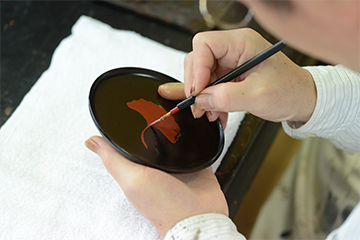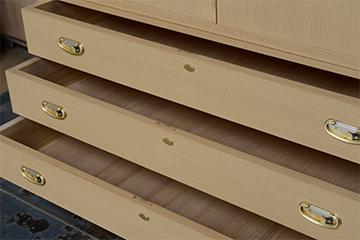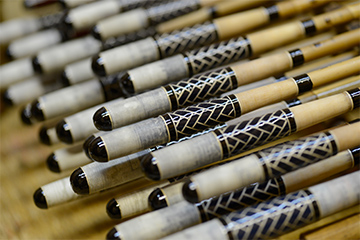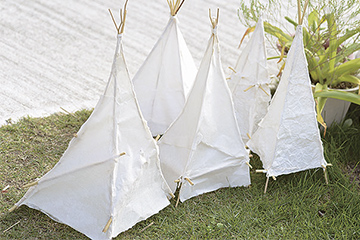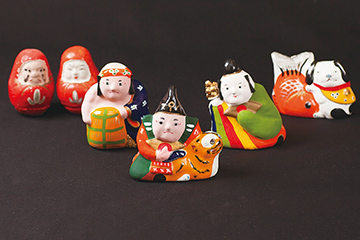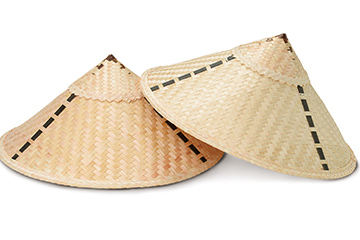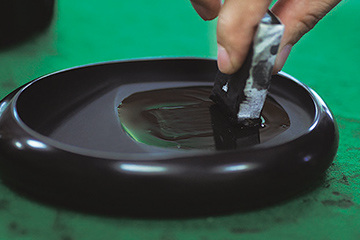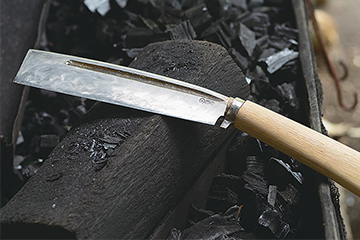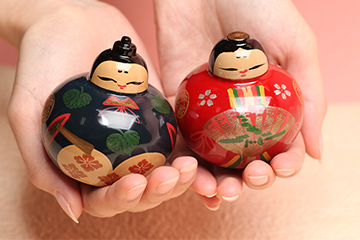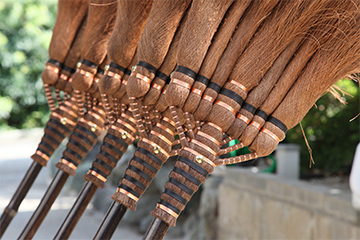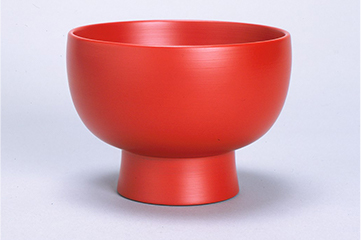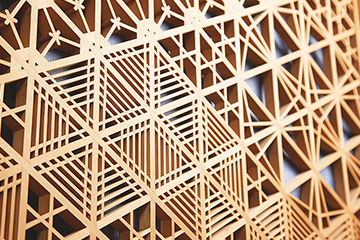 Overview of producing areas
Kishu-bina doll
Overview of producing areas
Kishu-bina doll
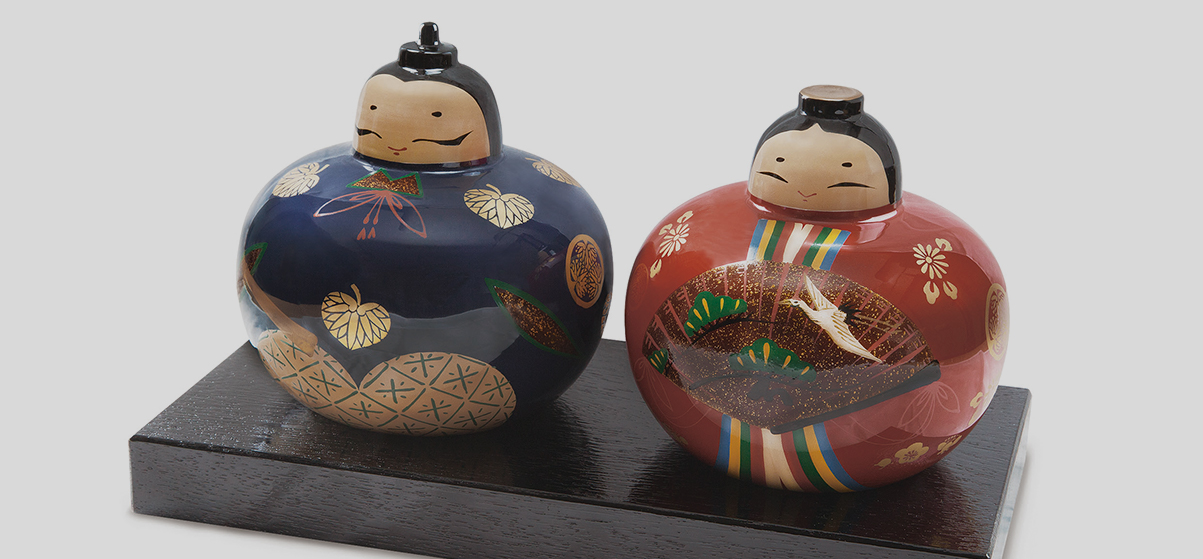
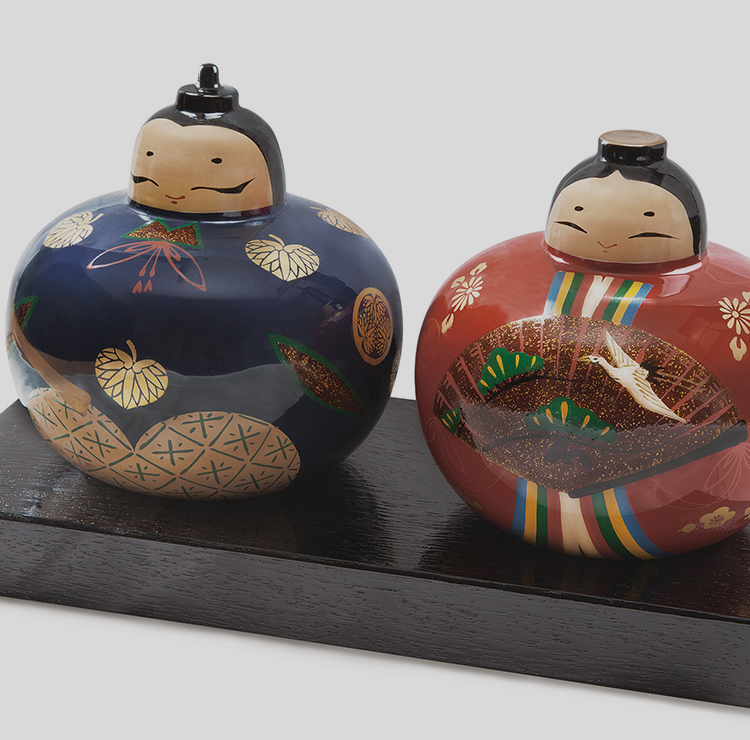


Overview
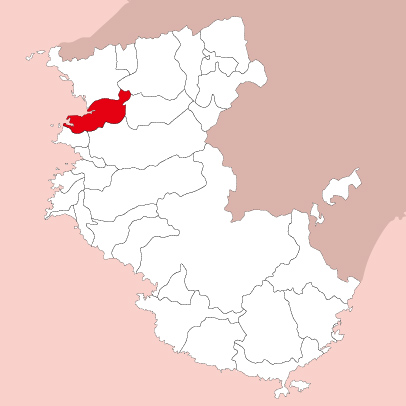
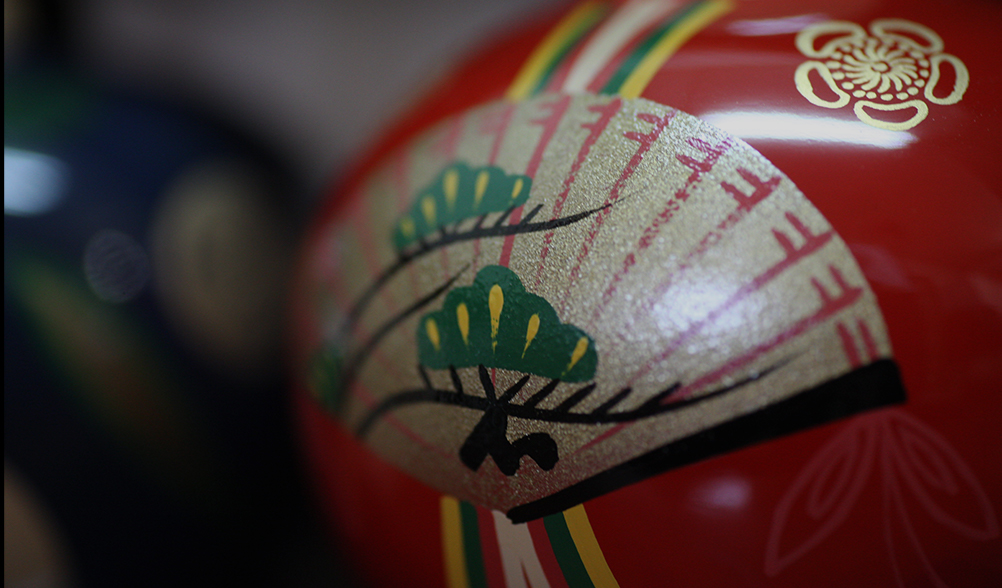
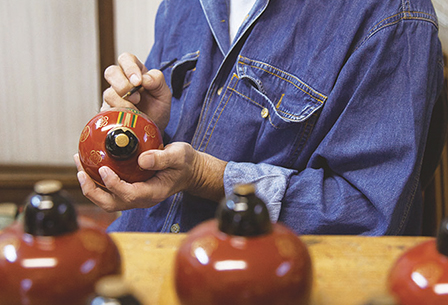
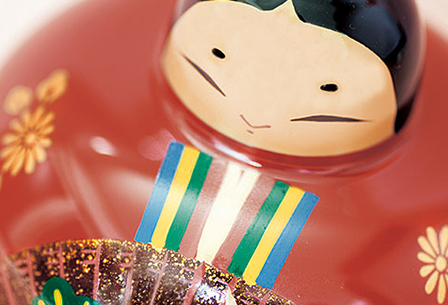




Scene from production
Large Kishu-bina dolls are 13.5cm tall; small ones are 4.5cm. The effort, time, and affection that go into the dolls remain the same for any size. The processes are essentially the same as those of traditional Kishu lacquerware. A woodworker shaves wood (Styrax japonica) to create the form; a lacquer worker applies a base coat and paints over it with lacquer. From there, a design painter applies the design. About seven colors are used for one doll. Colors are painted in layers; one color is applied, the doll is dried for a day and then the next color is applied.
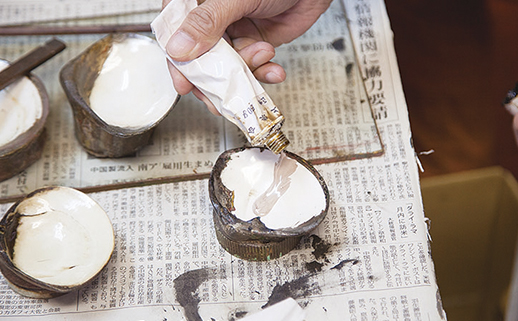
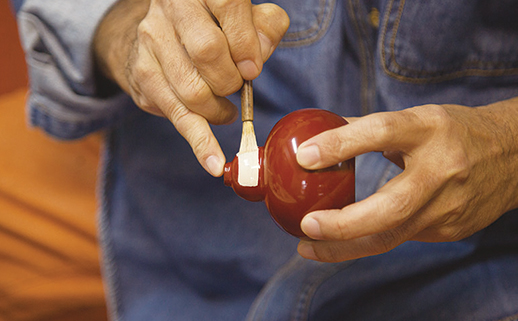
As lacquer is affected by temperature and humidity, two weeks to a month are required to complete one doll. Thanks to the careful work of craftspeople, with care the doll will increase in luster and charm over decades, without fading.
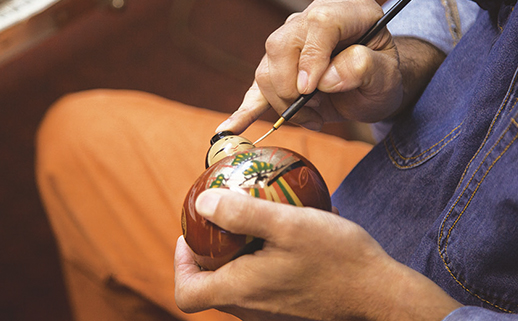
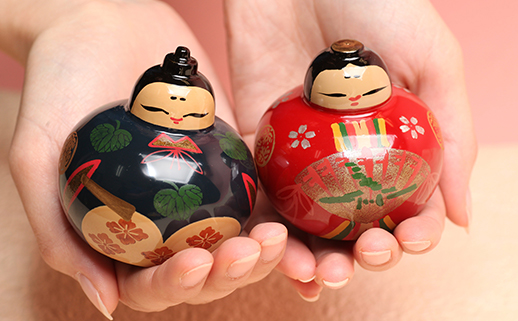

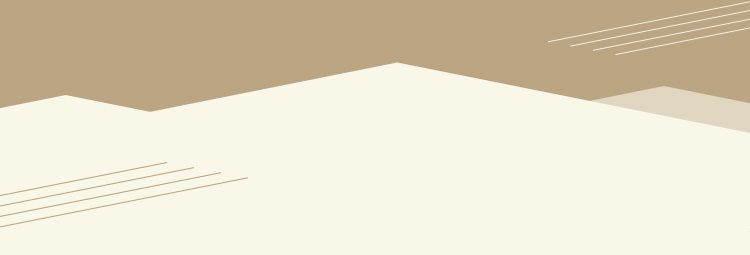
Traditional crafts of Wakayama




